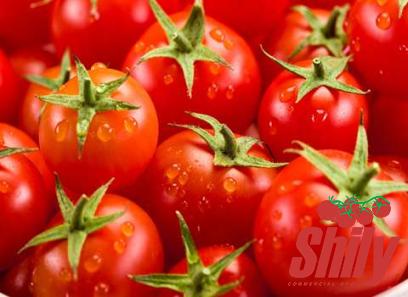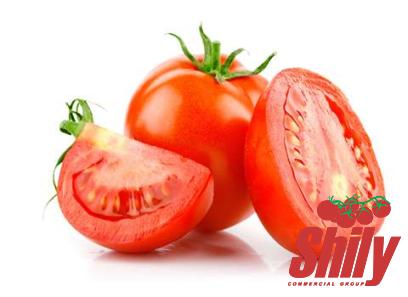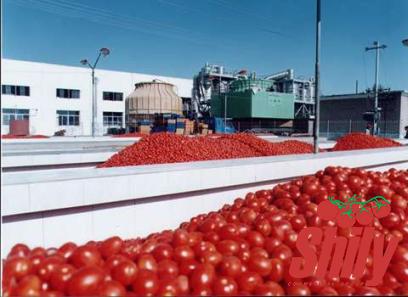In every well-stocked kitchen, a can or tube of tomato paste is a staple ingredient that adds depth and richness to a variety of dishes. However, just like any perishable item, tomato paste is susceptible to mold growth if not stored properly. In this comprehensive guide, we will delve into the causes, risks, and prevention tips for dealing with moldy tomato paste. **Understanding Mold Growth on Tomato Paste** Mold growth on tomato paste occurs when the product is exposed to favorable conditions for mold spores to thrive. Mold is a type of fungus that thrives in damp, warm environments, making tomato paste an ideal breeding ground if not stored correctly. Once mold spores land on the surface of the tomato paste and find the right conditions, they rapidly multiply, forming visible colonies that can be green, white, or black in color. The main factors that contribute to mold growth on tomato paste include: 1. **Moisture:** Excess moisture in the air or on the surface of the tomato paste provides the ideal environment for mold spores to germinate and grow. 2. **Air Exposure:** When the container of tomato paste is not sealed properly, air can circulate and introduce mold spores to the product. 3. **Temperature:** Mold thrives in temperatures between 77-86°F (25-30°C), making warm storage areas a breeding ground for mold on tomato paste. 4. **Contamination:** If utensils or hands that come in contact with the tomato paste are not clean, they can introduce mold spores to the product. **Health Risks Associated with Consuming Moldy Tomato Paste** Consuming moldy tomato paste can pose serious health risks, as mold produces mycotoxins that are harmful to human health. Mycotoxins are toxic compounds produced by certain molds, and when ingested, they can cause a range of health issues, including allergic reactions, respiratory problems, digestive issues, and in some cases, even neurological problems.

.
 Furthermore, moldy tomato paste may also harbor bacteria and other pathogens that can cause foodborne illnesses. The visible mold on the surface of the tomato paste is just the tip of the iceberg, as mold can penetrate deep into the product, making it impossible to remove all traces of contaminants. It is essential to discard any tomato paste that shows signs of mold growth, as consuming even a small amount of mold-contaminated food can lead to health complications, especially for individuals with compromised immune systems or underlying health conditions. **Prevention Tips to Avoid Moldy Tomato Paste** Preventing mold growth on tomato paste is key to ensuring food safety and preserving the quality of the product.
Furthermore, moldy tomato paste may also harbor bacteria and other pathogens that can cause foodborne illnesses. The visible mold on the surface of the tomato paste is just the tip of the iceberg, as mold can penetrate deep into the product, making it impossible to remove all traces of contaminants. It is essential to discard any tomato paste that shows signs of mold growth, as consuming even a small amount of mold-contaminated food can lead to health complications, especially for individuals with compromised immune systems or underlying health conditions. **Prevention Tips to Avoid Moldy Tomato Paste** Preventing mold growth on tomato paste is key to ensuring food safety and preserving the quality of the product.
..
 Here are some practical tips to help you avoid moldy tomato paste: 1. **Proper Storage:** Store opened tomato paste in an airtight container in the refrigerator to prevent mold growth. Make sure to use a clean spoon to scoop out the paste and avoid introducing contaminants. 2. **Use in a Timely Manner:** Tomato paste has a limited shelf life once opened. Use it within a week or freeze it in ice cube trays for longer storage. 3. **Inspect Before Use:** Always check the tomato paste for any signs of mold growth before using it in a recipe. If you spot any mold, discard the entire container to prevent cross-contamination. 4. **Keep it Dry:** Moisture is the enemy of tomato paste. Make sure to wipe the rim of the container before sealing it to prevent condensation from forming inside. 5. **Rotate Stock:** When buying tomato paste, make sure to use the oldest containers first to prevent them from spoiling. 6. **Temperature Control:** Avoid storing tomato paste in warm areas like near the stove or in direct sunlight. Opt for a cool, dark place for long-term storage. By following these prevention tips, you can minimize the risk of mold growth on your tomato paste and enjoy its delicious flavor in your culinary creations without worrying about potential health hazards.
Here are some practical tips to help you avoid moldy tomato paste: 1. **Proper Storage:** Store opened tomato paste in an airtight container in the refrigerator to prevent mold growth. Make sure to use a clean spoon to scoop out the paste and avoid introducing contaminants. 2. **Use in a Timely Manner:** Tomato paste has a limited shelf life once opened. Use it within a week or freeze it in ice cube trays for longer storage. 3. **Inspect Before Use:** Always check the tomato paste for any signs of mold growth before using it in a recipe. If you spot any mold, discard the entire container to prevent cross-contamination. 4. **Keep it Dry:** Moisture is the enemy of tomato paste. Make sure to wipe the rim of the container before sealing it to prevent condensation from forming inside. 5. **Rotate Stock:** When buying tomato paste, make sure to use the oldest containers first to prevent them from spoiling. 6. **Temperature Control:** Avoid storing tomato paste in warm areas like near the stove or in direct sunlight. Opt for a cool, dark place for long-term storage. By following these prevention tips, you can minimize the risk of mold growth on your tomato paste and enjoy its delicious flavor in your culinary creations without worrying about potential health hazards.
…
 **Conclusion** Moldy tomato paste is a common issue that can easily be prevented with proper storage and handling techniques. By understanding the causes of mold growth, the health risks associated with consuming moldy tomato paste, and implementing practical prevention tips, you can safeguard your health and enjoy the culinary versatility of tomato paste without any concerns about contamination. Remember, when in doubt, throw it out. It’s better to be safe than sorry when it comes to food safety. Let’s savor the rich flavors of tomato paste in our favorite dishes, knowing that we have taken the necessary steps to keep it mold-free and safe for consumption. **Additional Tips for Handling Moldy Tomato Paste** In the unfortunate event that you discover mold growth on your tomato paste, it is essential to handle the situation correctly to prevent any contamination. Here are some additional tips for dealing with moldy tomato paste: 1. **Do Not Sniff or Taste:** Mold can produce airborne spores that can be harmful when inhaled. Avoid sniffing the moldy tomato paste or tasting it to determine its safety. The presence of mold is a clear indication that the product should be discarded. 2. **Containment:** If you find mold on your tomato paste, contain the affected product immediately to prevent spores from spreading to other surfaces. Place the container in a sealed bag before discarding it in the trash to minimize the risk of cross-contamination.
**Conclusion** Moldy tomato paste is a common issue that can easily be prevented with proper storage and handling techniques. By understanding the causes of mold growth, the health risks associated with consuming moldy tomato paste, and implementing practical prevention tips, you can safeguard your health and enjoy the culinary versatility of tomato paste without any concerns about contamination. Remember, when in doubt, throw it out. It’s better to be safe than sorry when it comes to food safety. Let’s savor the rich flavors of tomato paste in our favorite dishes, knowing that we have taken the necessary steps to keep it mold-free and safe for consumption. **Additional Tips for Handling Moldy Tomato Paste** In the unfortunate event that you discover mold growth on your tomato paste, it is essential to handle the situation correctly to prevent any contamination. Here are some additional tips for dealing with moldy tomato paste: 1. **Do Not Sniff or Taste:** Mold can produce airborne spores that can be harmful when inhaled. Avoid sniffing the moldy tomato paste or tasting it to determine its safety. The presence of mold is a clear indication that the product should be discarded. 2. **Containment:** If you find mold on your tomato paste, contain the affected product immediately to prevent spores from spreading to other surfaces. Place the container in a sealed bag before discarding it in the trash to minimize the risk of cross-contamination.










Your comment submitted.